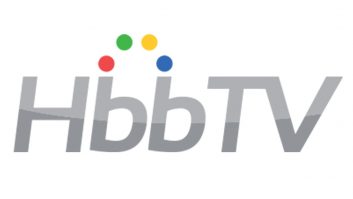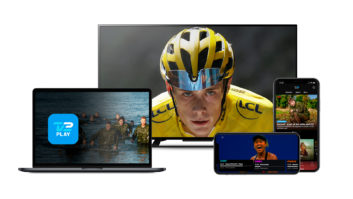
Peter McAvock, EBU
We all know what ‘OTT’ is.
Well, ‘over the top’ of what exactly? It’s over the top of linear broadcasting. Let’s consider that for a second: the basis for OTT services is a core linear broadcast proposition. I know that the so-called OTT operators have left this out, but this original idea was the motivation behind HbbTV.
The proposition is simple. The quality of linear broadcast combined with the convenience of the internet. What drove the original development work and what remains the cornerstone application is ‘catch-up TV’: watching the shows you like even if you’ve missed them (within a reasonable time window). To make any hybrid TV system work, you need a quality internet connection to ensure a tolerable picture quality on a large flat panel display, and you need the TV set connected, of course. As an aside, we’ve found that hybrid TV is a good way of encouraging viewers to connect their TV sets.
HbbTV is much more of course: as an industry professional who was around at the start of HbbTV, it was the first time in quite a while that I saw the public service media organisations from big European markets, and the big-name consumer electronics vendors all talking around the same standardisation table with a common problem to solve.
The rest is history, according to a recent European Broadcasting Union (EBU) survey: HbbTV is now launched in at least 20 countries around Europe. It is entering its second generation and boasts an innovative approach to interoperability. We’ll get to all
of these in turn.
But what are the key drivers for the industry to consider HbbTV over, say, proprietary solutions from vendors or the blue-chip internet companies. For one, product-marketing specialists didn’t invent the name HbbTV. Maybe that’s why some broadcasters and network operators still don’t get it. HbbTV is available in pretty much every connected TV set in Europe; an HbbTV service is essentially a web service. What could be easier?
But the cool bit is that the broadcaster controls the user experience, not like those other proprietary solutions. Sounds blindingly obvious. On top of that, you can now do targeted advertising, in app purchases and other interesting commercial stuff.
Of course, it’s not as simple as that in real life. Because HbbTV is an open standard, there’s no vendor lock-in, so you need to make sure your HbbTV service works across different TV sets. This requires pre-launch co-ordination in the different markets. Then there’s raising awareness of the service to the consumer; selling it if you like.
This is where the real co-operation needs to come in: it should be simple to switch the data service on in the TV set, and of course, those proposing applications need to make sure that these don’t crash the TV sets. These issues are well known, and it’s inconvenient addressing these issues up front, but if you get it right, the rewards are there.
As HbbTV 2.0 comes to market (the first announcements to be made at IFA ’16 2-7 September 2016), the two main drivers will be the migration from MHEG-5 to HbbTV in the UK, and from MHP to HbbTV in Italy. These two mature markets will showcase some of the new features available in HbbTV such as application synchronisation, access services support, and more elaborate web-based technologies like more advanced support of HTML5.
Back to interoperability: how does HbbTV address the need to ensure that there’s compatibility between services and devices? Ensuring that applications work reliably and predictably across different vendor’s equipment is a must for a technology that operates in the zero tolerance area of linear TV. HbbTV’s approach is to link the availability of test materials (for testing implementations) with that of the specification.
The proposition to HbbTV Members is clear: if you feel strongly about a feature, then you had better commit to providing the test assertions that drive the test suite. Otherwise, the feature doesn’t appear in the HbbTV specification. This innovative approach means that the test suites that implementers rely on to test their HbbTV stacks come out quicker, thereby allowing their products to come to market at a faster pace.
So what’s next for HbbTV? With some 80 member companies, the Association is in a healthy state. The EBU along with the other broadcasters probably needs to promote HbbTV better among its members. The work we have done to ensure that there’s a good quality open standard in this space needs to be brought to the attention of those who make the investment decisions in their companies.
Nobody is saying that HbbTV should be the core proposition for broadcaster online services, but its unique offering beside other OTT propositions is compelling for any broadcaster with an eye
on the future.
And as internet connections improve, the blending of linear broadcast and online services will only increase; no other technology out there affords the same level of integration. And the broadcasters are in charge. This is a strong result (in my opinion, at least).
For more information, see our latest tech-i magazine, ‘What’s all the fuss about HbbTV?’: tech.ebu.ch/publications/ebu-tech-i-28







